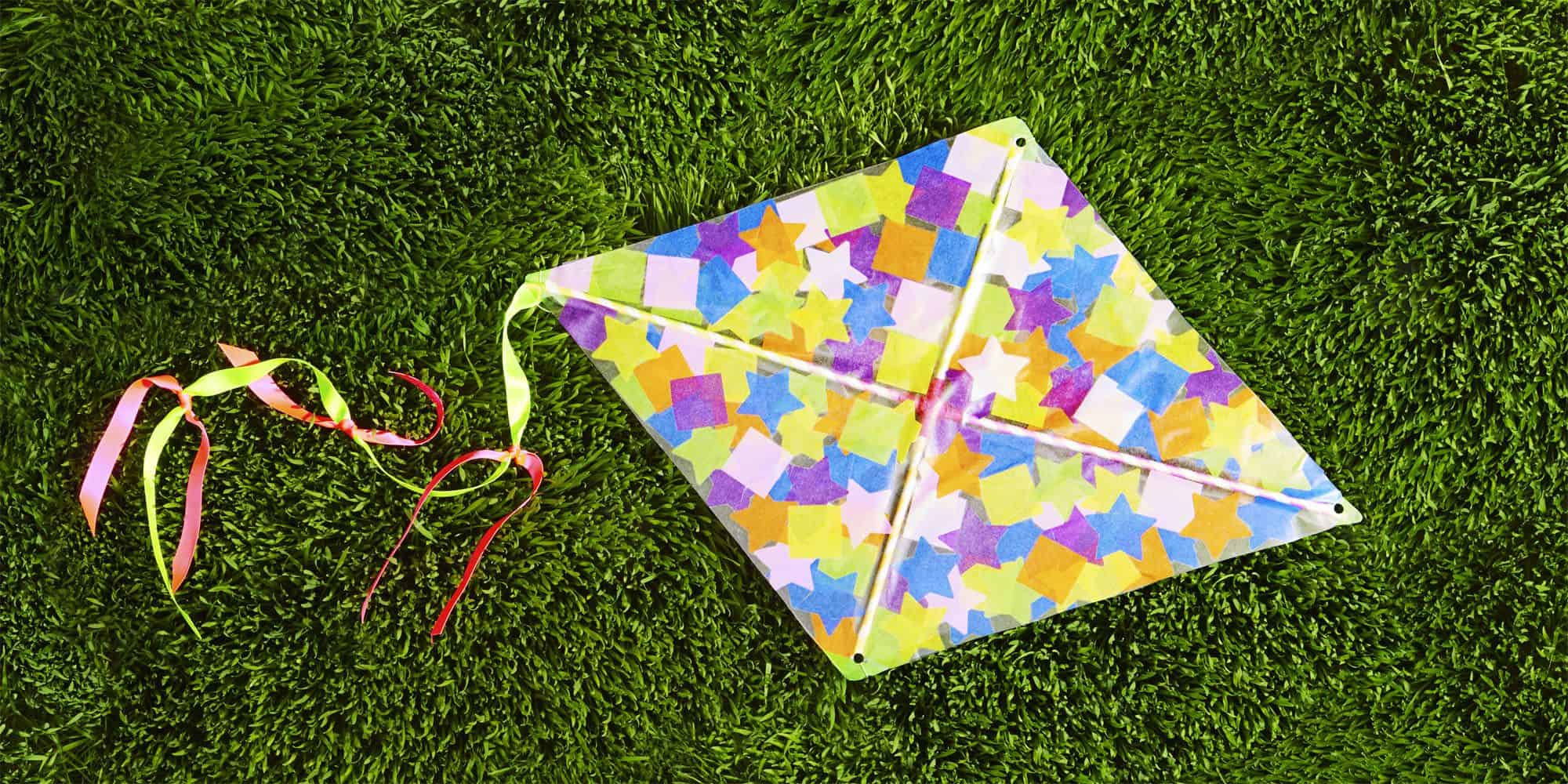Fly High with Homemade Skies: A Parent’s Guide to Making the Perfect Kite
Hey there, super parents! Are you ready to whisk away your kids on an adventure that’s light as air but packed with fun? Let’s dive into the wonderful world of kite-making, where you can share laughs, spend quality time, and create memories that will soar just like your homemade kites! ?
Making a kite is more than just a craft; it’s a bonding experience, a science lesson, and an outdoor activity all rolled into one. A task that might seem intricate at first, but with our step-by-step guide, you’ll find it a breeze! So, gear up for a day filled with creativity, learning and of course, lots of fun.
Before We Start: Understanding the Wind Beneath Your Wings
Every kite is at the mercy of the breeze, but before you start crafting, let’s get a little windy wisdom. Did you know that the best kind of wind for kite flying is a steady, gentle breeze about 5 to 25 miles per hour? That’s optimal to keep your kite dancing without a stormy struggle.
Materials You’ll Need
- Materials:
- Lightweight craft paper or ripstop nylon
- Two wooden dowels (one long, one short)
- String for the frame and bridle
- Reel of kite string (also known as flying line)
- A ruler or measuring tape
- Scissors
- Glue or a glue gun
- Markers, stickers, or paint for decoration
- A small ring or keychain (for the bridle)
- A ribbon or lightweight fabric for the tail
Keep an excitement-packed smile while you gather your materials, because the adventure begins now. Feel free to involve the kiddos here — after all, picking the colors and decorations is half the fun!
Assemble Your Tools and Helpers
Once you’ve gathered all your materials, find a comfortable and spacious workspace like your living room floor or a big table. Make sure it’s kite-construction-friendly for your junior aviators too!
Building the Frame
- Cutting the Dowels: Measure and cut your wooden dowels to size. Typically, a traditional diamond-shaped kite is taller than it is wide, so make sure to cut accordingly.
- Forming the Cross: Lay the longer dowel vertically and place the shorter one horizontally to form a cross. The intersection should be about one-third from the top of the vertical dowel to ensure balance.
- Binding the Dowels: Use string to securely tie the dowels together at the intersection. A dab of glue can add extra stability. Now you’ve got the skeleton of your kite!
Covering the Frame
- Tracing the Outline: Place your craft paper or nylon flat on the floor, and lay the frame on top. Trace around the frame, adding an inch along the edges for a seam.
- Cutting the Sail: Carefully cut out the traced outline. This will be the sail that catches the wind!
- Attaching the Sail: Fold the extra inch of material over the dowels and glue it down, creating a taut sail. This step is crucial for a good flight.
Alright, sky-bound scholars! You’re now cruising at a comfortable altitude, and the kite is taking shape. Remember to let the glue dry, because nobody likes a droopy kite. And while it does, let your little ones unleash their inner artists and decorate the kite.
Making the Bridle
What’s a bridle, you ask? Well, it’s the part of the kite that helps maintain stability, and it’s what you attach the flying line to! Here’s how you make it:
- Attaching the Bridle: Tie a string to the top of the vertical dowel, then attach the other end to the horizontal dowel, creating a small loop at the intersection for the flying line.
- Adding the Flying Line: Attach the reel of kite string to the loop in your bridle. It’s all coming together now!
We’re getting closer to the grand launch, fellow pilots. But before we take off, there’s just one final piece of this high-flying puzzle: the tail.
Constructing the Tail
While your kids may think the tail is just for looks, it’s actually a critical part of the kite’s balance. Without an adequate tail, our aerial friend might not fly too true. Here’s what to do:
- Measuring the Tail: Cut a length of ribbon or fabric about three to six times the length of your kite. This will help keep it steady in the sky.
- Securing the Tail: Attach the tail at the bottom end of the kite, ensuring it’s firmly glued or tied so it won’t detach mid-flight.
There you have it, adventure architects! You’ve just crafted not just a kite, but a vessel for joy. But stay tuned; in the next episode of our high-flying escapade, we’ll cover the exhilarating launch process, proper flying techniques, and safety tips to ensure a perfect outing with your newly built kite. Time to let our imaginations — and our kites — soar to new heights!

5 Things Parents Should Know When Preparing to Make a Kite
1. Set Expectations and Patience is Key
Before you even start, it’s important to set proper expectations, not just for the finished kite but for the process itself. Making a kite can be a test of patience, especially for the little ones. Emphasize that it’s the time spent together and what you’re learning that counts, not just the end product. Go with the flow and let the experience be joyful and relaxed!
2. Safety First: Choose the Right Environment
When selecting a location for both crafting and flying your kite, safety is your number one priority. Ensure the crafting area is free of hazards and that when it’s time to fly, you choose an open space away from power lines and roads. Going over safety guidelines with your children will ensure that everyone can enjoy the kite-flying experience without worries.
3. Understand the Importance of the Tail
A kite’s tail isn’t just a pretty add-on; it provides balance and stability. Before you begin, explain to your kids how a tail helps a kite to fly straight and resist spinning. Playing around with the length and weight of your tail can be a great learning experiment to find just the right balance for your unique kite.
4. Decorating Can Be a Learning Moment
While decorating is fun, it’s also a chance to infuse learning. Discussing symmetry and design with your children encourages them to think about how their choices might affect the kite’s performance. For instance, adding too much paint on one side might make the kite lopsided. Turn the decoration stage into an art-meets-science moment!
5. Prep for Multiple Attempts
Sometimes the first kite doesn’t fly as well as hoped, and that’s okay! Prepare for multiple attempts, both in building and flying. This grit and perseverance are not just great life lessons; it’s also what makes eventual success so sweet. Have backup materials ready, and remind your kids that trial and error is part of the discovery process.
Remember, parents: the real treasure of kite-making is the shared smiles and the journey of creation with your loved ones. So take lots of pictures, laugh off any mistakes, and revel in the anticipation of seeing your collective work take to the skies. Let the kite-making day be one where everyone’s spirits fly as high as your handmade masterpiece!
See more great Things to Do with Kids in New Zealand here. For more information see here
Disclaimer
The articles available via our website provide general information only and we strongly urge readers to exercise caution and conduct their own thorough research and fact-checking. The information presented should not be taken as absolute truth, and, to the maximum extent permitted by law, we will not be held liable for any inaccuracies or errors in the content. It is essential for individuals to independently verify and validate the information before making any decisions or taking any actions based on the articles.




